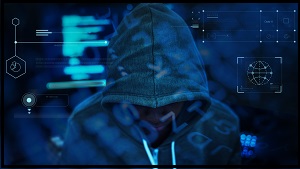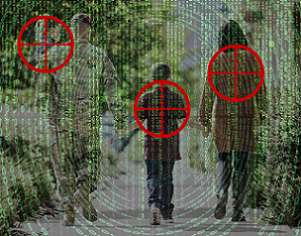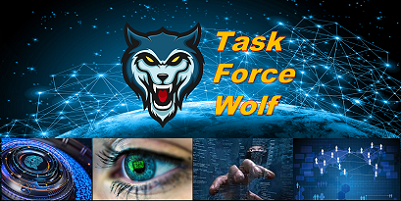[Editor’s Note: Crowdsourcing remains one of Army Mad Scientist’s most effective tools for harvesting ideas, thoughts, and concepts from a wide variety of interested individuals, helping us to diversify thought and challenge conventional assumptions. Today’s post by guest blogger LTC Daniel Gomez is an outstanding example of the power of disruptive creative writing and was judged to be the winning submission from our recent Back to the Future Writing Contest.  Our adversaries continue to probe, watch, and learn from us, driven to rapidly innovate in their quest for asymmetric advantage. LTC Gomez explores one such advantage at the nexus of online gaming, where savvy adversaries can “conduct multi-domain, synchronized operations across multiple geospatial regions…. operating as independent self-sustained and distributed joint teams, using real-time culturally neutral comms.” Read on to learn how Decentralized Autonomous Organizations could converge the power and reach of gaming, the mass of like-minded “virtual nations” of individuals, and nefarious tactics like “Deep-Snapping,” “Spot-Blowing,” “Husking,” and Swatting to out-compete and out-influence the greatest global military power — “you have been warned!”]
Our adversaries continue to probe, watch, and learn from us, driven to rapidly innovate in their quest for asymmetric advantage. LTC Gomez explores one such advantage at the nexus of online gaming, where savvy adversaries can “conduct multi-domain, synchronized operations across multiple geospatial regions…. operating as independent self-sustained and distributed joint teams, using real-time culturally neutral comms.” Read on to learn how Decentralized Autonomous Organizations could converge the power and reach of gaming, the mass of like-minded “virtual nations” of individuals, and nefarious tactics like “Deep-Snapping,” “Spot-Blowing,” “Husking,” and Swatting to out-compete and out-influence the greatest global military power — “you have been warned!”]
September 22nd, 2033 3:18 AM EST.
Jamil’s cheek pressed firmly into the cold hardwood floor of his living room, a black tactical boot on the back of his neck holding him in place.  He watched as the blue and red lights of police cars swept across his leather couch and pictures of his wife and daughters. He listened as armed men trounced through his suburban home, resting in a subdivision cul-de-sac just outside Alexandria. The officers called to each other, their conversation accented by doors being kicked open.
He watched as the blue and red lights of police cars swept across his leather couch and pictures of his wife and daughters. He listened as armed men trounced through his suburban home, resting in a subdivision cul-de-sac just outside Alexandria. The officers called to each other, their conversation accented by doors being kicked open.
“Clear!” one shouted.
“Second floor clear, Sir, no contact!” another called down the stairway.
An older man in a tactical vest holstered his handgun and sneered. “Dammit, let him up,” he ordered.
Jamil felt the boot lift off his neck and heard the snap of pliers cutting through the zip ties cinched around his wrists. The emotion rushed to his head as he rose from the ground, a black-gloved hand helping him.
 However, before Jamil could voice his anger, the outrage, the mortal danger they could have put his family in, the lead officer interrupted his thoughts, “Sir, I am sorry, but,” he paused, “We believe you were swatted.”
However, before Jamil could voice his anger, the outrage, the mortal danger they could have put his family in, the lead officer interrupted his thoughts, “Sir, I am sorry, but,” he paused, “We believe you were swatted.”
Two weeks ago, Lieutenant Colonel Jamil Roberts was assigned as the officer in charge of the Joint Operations Center (JOC) of Special Operations Joint Task Force Wolf. It was a unit designated to track and interrupt illicit operations in Eurasia, specifically Turkey and its northern neighbors. His in-brief consisted of a hundred slide  intelligence MS PowerPoint presentation, seventeen white papers on transnational organizations, a Center for Army Lessons Learned Handbook on Russian operations in the Russo-Ukraine war 2022-2025, and a DisneyFlix documentary series on China’s Invasion of Taiwan in 2027.
intelligence MS PowerPoint presentation, seventeen white papers on transnational organizations, a Center for Army Lessons Learned Handbook on Russian operations in the Russo-Ukraine war 2022-2025, and a DisneyFlix documentary series on China’s Invasion of Taiwan in 2027.
With the fluctuation of political and military power in the United States, Indonesia, the New Soviet Union, and China, both State and Non-state actors across the globe have begun irregular warfare operations regionally and internationally. The JOC in-brief of “known” adversaries paled in comparison to the list of “unknown or potential” adversaries. TF Wolf operated out of Constantinople, Turkey, in support of the European Union’s military. It provided a myriad of capabilities, including Military Deception, Cyber, and Information Operations.
“So let me get this straight?” Roberts said, pacing back and forth in front of his Intel team on the JOC Floor. “You’re telling me that a mobile video game…”
“Yes, Sir,” Staff Sergeant Rodriguez replied.
“…has more technological prowess and military support capability …” Roberts stammered.
“That’s correct, Sir,” Sergeant Major Lee added.
“…than I have ever had…” Roberts continued, his voice peaking to an uncomfortable volume.
 Rodriguez nodded, her eyebrows scrunching together along with her nose.
Rodriguez nodded, her eyebrows scrunching together along with her nose.
“…in my twenty-three years in the Army… fifteen in Special Operations… and eight at JSOC?” he asked, exasperated.
“Yep…” Rodriguez replied, popping her lips.
“I’m done for today,” he huffed. “Sergeant Major,” he acknowledged.
“Have a good leave, Sir,” Lee replied, his hand chopping the sky with a mock salute.
Roberts pushed the JOC door open, mumbling to himself, “Stupid multinational drug dealing, crypto stealing, human trafficking, video-game playing crime syndicates!”
Lee turned to Rodriguez as he flipped through the briefing.

“The boss is right. It’s just crazy how we are supposed to be the greatest fighting force on Earth, and these third-rate actors run circles around us using mobile games,” he said depressingly.
“SGM, it takes me fourteen clicks to check my AOL.gov email,” Rodriguez answered, sitting back at her desk.
Lee continued flipping through the slides. Apparently, a non-state actor called LAST was using a mobile game called Shambling Corpses: Legacy to manage operations from the Mediterranean, through Turkey, and up through the Southern Caucuses. Based on a graphic novel turned Netflix Miniseries, SCL was a free to play game that seemed innocuous. Players would log in and lead a group of survivors through the apocalypse by gathering resources, attacking  zombies, and managing their army. After reaching level 10, players would be thrust into a random clan to continue their journey to become Clan Master of their numbered region. These clans and regions, however, were not geo-specific. Players from any country with Wi-Fi or satellite service would join together and conduct operations across SCL‘s different gameplay modes. SCL also featured micro-transactions so paying players could jump ahead of their peers by substituting money for speed-ups and resources.
zombies, and managing their army. After reaching level 10, players would be thrust into a random clan to continue their journey to become Clan Master of their numbered region. These clans and regions, however, were not geo-specific. Players from any country with Wi-Fi or satellite service would join together and conduct operations across SCL‘s different gameplay modes. SCL also featured micro-transactions so paying players could jump ahead of their peers by substituting money for speed-ups and resources.
Lee flipped to the last slide. In SCL‘s WAR game mode, clans had to invade other regions to secure key terrain to gain special resources giving them distinct advantages in battle. The clan leader had clan staff send out scheduled and impromptu messages to ensure well-resourced players would be available to invade and win. The staff would need to manage recall rosters  of up to 80 players at a time across multiple time zones and countries. SCL had an auto-translate chat feature that could enable communication across one hundred languages. The LAST Clan had members from Korea, China, the USA, Turkey, Russia, and Brazil, to name a few. Additionally, in WAR, the clans had to manage their alliances, map out the regions of opposing clans, and manage their clan bonus resources to support their invasion force.
of up to 80 players at a time across multiple time zones and countries. SCL had an auto-translate chat feature that could enable communication across one hundred languages. The LAST Clan had members from Korea, China, the USA, Turkey, Russia, and Brazil, to name a few. Additionally, in WAR, the clans had to manage their alliances, map out the regions of opposing clans, and manage their clan bonus resources to support their invasion force.
Lee stood up from his GSA-procured leather-bound swivel chair and exclaimed, “This isn’t a game!” He strode up to the whiteboard on the JOC floor.
“This,” he circled a capital L in red, “is LAST!”
“These,” he drew multiple circles in blue, “are different countries!”
 “What LAST is doing, is using SCL, to learn how to conduct multi-domain, synchronized operations across multiple geospatial regions! They are operating as independent self-sustained and distributed joint teams, using real-time culturally neutral comms,” he finished, emphatically drawing arrows connecting all of the shapes.
“What LAST is doing, is using SCL, to learn how to conduct multi-domain, synchronized operations across multiple geospatial regions! They are operating as independent self-sustained and distributed joint teams, using real-time culturally neutral comms,” he finished, emphatically drawing arrows connecting all of the shapes.
“I’m done for today…” Lee sighed, dropping the marker onto the board. “Rodriguez,” he acknowledged.
“Sergeant Major,” Rodriguez replied, still looking down at her laptop, her hand chopping the sky with a mock salute.
Rodriguez continued to update her LAST intel file, focusing on how they received funding. Users throughout the Dark Web would purchase parcel pieces of the LAST decentralized autonomous organization (DAO) to become members. The Clan leaders would then “Baski kagidi” or “Print Paper” in Turkish, selling those parcels to another party. The catch is that they would retain ownership “under the table” only to purchase those parcels back at a higher rate. The members would then engage in hacking operations to “add value.”
 LAST engaged in blackmail Deep-Snapping (manipulating accessed home camera video with deepfakes), and Spot-Blowing (accessing car toll passes visiting less than reputable locations). It wouldn’t be a one-time deal either; LAST would force victims to pay monthly “security” fees to gig workers, who were most likely AI ChatGPT-X bots. The LAST operatives also shared videos of these operations on the Dark Web and charged money for views. The payments would be done in cryptocurrency but washed in a “cash-out marketplace.” Think of it as a pawn shop for crypto, where whoever had held the crypto was more valuable than what the crypto was being traded at. Last year alone, they made $230 million.
LAST engaged in blackmail Deep-Snapping (manipulating accessed home camera video with deepfakes), and Spot-Blowing (accessing car toll passes visiting less than reputable locations). It wouldn’t be a one-time deal either; LAST would force victims to pay monthly “security” fees to gig workers, who were most likely AI ChatGPT-X bots. The LAST operatives also shared videos of these operations on the Dark Web and charged money for views. The payments would be done in cryptocurrency but washed in a “cash-out marketplace.” Think of it as a pawn shop for crypto, where whoever had held the crypto was more valuable than what the crypto was being traded at. Last year alone, they made $230 million.
LAST operated via a mix of low and high-tech mediums. They would meet locally, at chain restaurant kiosks, or virtually, in gaming apps like SCL. LAST even created a new tactic, Husking. A husk is an extremely vulnerable person. Their only job is to activate a burner satellite phone. The phones were hazardous and, when powered up, activated a one-time use AI script that issued blackmail statements to scam victims.
 Rodriguez felt like a broken record. She tried to explain to her leaders how our adversaries would use the convergence of emergent technologies to their advantage, but to no avail. Gaming, apps, crypto, DAOs, hacking, blackmail, ChatGPT, and AI were all right there waiting to be used… but it seems that LAST got there first. Wrapping up, she headed outside to the JOC phone locker.
Rodriguez felt like a broken record. She tried to explain to her leaders how our adversaries would use the convergence of emergent technologies to their advantage, but to no avail. Gaming, apps, crypto, DAOs, hacking, blackmail, ChatGPT, and AI were all right there waiting to be used… but it seems that LAST got there first. Wrapping up, she headed outside to the JOC phone locker.
Her Musk Phone Bracelet buzzed to life when it recognized her DNA.
“Ninety-three messages?” she whispered in disbelief. “Read,” she commanded.
Her bracelet emitted a holograph of an AI-generated green-eyed woman sitting on a gilded throne.
 “Good Afternoon, Sarah; my name is Jade. LAST has been watching your little work there in Constantinople, and LAST is not pleased. Discontinue your operations now, or face the consequences,” she whispered. “You have been warned.”
“Good Afternoon, Sarah; my name is Jade. LAST has been watching your little work there in Constantinople, and LAST is not pleased. Discontinue your operations now, or face the consequences,” she whispered. “You have been warned.”
The woman disappeared and faded into the TF Wolf Crest, followed by an exploding logo of her daughter’s dance school.
Two weeks later, in the slums of Chittagong, Bangladesh, Amreet ripped open a black plastic bag using his decayed and yellow teeth. He wiped a thin coat of  mercury off the satellite phone inside with his sleeve and plugged in a dilithium battery. The phone vibrated and turned green, showing it had achieved signal.
mercury off the satellite phone inside with his sleeve and plugged in a dilithium battery. The phone vibrated and turned green, showing it had achieved signal.
On the other side of the world, at 0300 EDT, a desk officer pressed the glowing answer icon on her headset, “Alexandria Police Department, what’s your emergency?”
If you enjoyed this post, check out the following related content:
Virtual Nations: An Emerging Supranational Cyber Trend, by proclaimed Mad Scientist Marie Murphy
Gaming Information Dominance and Russia-Ukraine Conflict: Sign Post to the Future (Part 1), by Kate Kilgore
The Exploitation of our Biases through Improved Technology, by Raechel Melling
What the Joint Force can learn from K-Pop “Stans” by Matthew Ader
Extremism on the Horizon: The Challenges of VEO Innovation, by Colonel Montgomery Erfourth and Dr. Aaron Bazin
Hybrid Threats and Liminal Warfare and associated podcast, with proclaimed Mad Scientist Dr. David Kilcullen
The Classified Mind – The Cyber Pearl Harbor of 2034, by proclaimed Mad Scientist Dr. Jan Kallberg
Weaponized Information: What We’ve Learned So Far…, Insights from the Mad Scientist Weaponized Information Series of Virtual Events, and all of this series’ associated content and videos
In It to Win It: Competition, Crisis, & Conflict
Is Ours a Nation at War? U.S. National Security in an Evolved — and Evolving — Operational Environment and the comprehensive publication from which it was excerpted — Is Ours a Nation at War? Proceedings for the TRADOC G-2 2021 “Role of America’s Army in National Defense, 2021-2030” Campaign of Learning, published by our colleagues at the Center for Army Lessons Learned (CALL)
About the Author: Lieutenant Colonel Daniel Gomez currently serves in the US Army Reserve as an Instructor of Innovation and Creativity at Joint Special Operations University, United States Special Operations Command. During his twenty years in service, Daniel served two combat tours in Iraq, two Special Operations deployments to the Pacific Theater, and five years as an instructor, scenario designer, and course manager at the United States Army John F. Kennedy Special Warfare Center and School. Daniel is the CEO of First Person Xperience LLC, an education and training company focused on teaching Creativity, Adaptability, and Human Dynamics to National Defense Professionals.
Disclaimer: The views expressed in this blog post do not necessarily reflect those of the U.S. Department of Defense, Department of the Army, Army Futures Command (AFC), or Training and Doctrine Command (TRADOC).



